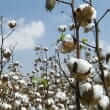Background
- Gossypol is a pigment that is most commonly produced by the stem, seeds, and roots of the cotton plant. Gossypol was first identified as an infertility agent when studies were conducted in China to explain extremely low birth rates in a particular geographic region. The phenomenon was attributed to the use of crude cottonseed oil for cooking; further investigation revealed that the antifertility agent was gossypol.
- Gossypol may cause infertility in men, potentially making it a promising alternative to surgical vasectomy. In early research, gossypol shows some evidence of benefit as a treatment for endometriosis and certain cancers, but further research is necessary.
- At low doses and for short durations, gossypol is well tolerated. However, its use is limited by the fact that it may cause potassium depletion and infertility.
- In traditional medicine practices, gossypol has been used to treat nasal polyps, uterine fibroids, and other types of cancer. A tea of fresh or roasted seeds has been used to treat bronchitis, diarrhea, dysentery, and hemorrhage. Cottonseed oil was used by early American slaves for abortion.
- Further research is needed to determine if lower doses, possibly in combination with other therapies, may be effective and safe.
References
- Dodou K, Anderson RJ, Small DA, and Groundwater PW. Investigations on gossypol: past and present developments. Expert.Opin.Investig.Drugs 2005;14(11):1419-1434. View Abstract
- Final report on the safety assessment of Hydrogenated Cottonseed Oil, Cottonseed (Gossypium) Oil, Cottonseed Acid, Cottonseed Glyceride, and Hydrogenated Cottonseed Glyceride. Int J Toxicol. 2001;20 Suppl 2:21-29. View Abstract
- Kalla NR. Gossypol. Acta Eur.Fertil. 1990;21(1):5-6. View Abstract
- Kovacic P. Mechanism of drug and toxic actions of gossypol: focus on reactive oxygen species and electron transfer. Curr.Med.Chem. 2003;10(24):2711-2718. View Abstract
- Le Blanc M, Russo J, Kudelka AP, and Smith JA. An in vitro study of inhibitory activity of gossypol, a cottonseed extract, in human carcinoma cell lines. Pharmacol.Res. 2002;46(6):551-555. View Abstract
- Liu GZ, Lyle KC. Clinical trial of gossypol as a male contraceptive drug. Part II. Hypokalemia study. Fertil.Steril. 1987;48(3):462-465. View Abstract
- Liu GZ, Ch'iu-Hinton K, Cao JA, Zhu CX, and Li BY. Effects of K salt or a potassium blocker on gossypol-related hypokalemia. Contraception 1988;37(2):111-117. View Abstract
- Miller LG. Herbal medicinals: selected clinical considerations focusing on known or potential drug-herb interactions. Arch.Intern.Med 11-9-1998;158(20):2200-2211. View Abstract
- Porat O. Effects of gossypol on the motility of mammalian sperm. Mol.Reprod.Dev. 1990;25(4):400-408. View Abstract
- Qian SZ. Gossypol-hypokalaemia interrelationships. Int.J.Androl 1985;8(4):313-324. View Abstract
- Royer RE, Mills RG, Deck LM, Mertz GJ, and Vander Jagt DL. Inhibition of human immunodeficiency virus type I replication by derivatives of gossypol. Pharmacol.Res. 1991;24(4):407-412. View Abstract
- Stein RC, Joseph AE, Matlin SA, Cunningham DC, Ford HT, and Coombes RC. A preliminary clinical study of gossypol in advanced human cancer. Cancer Chemother.Pharmacol. 1992;30(6):480-482. View Abstract
- Waites GM, Wang C, and Griffin PD. Gossypol: reasons for its failure to be accepted as a safe, reversible male antifertility drug. Int.J.Androl 1998;21(1):8-12. View Abstract
- Wu D. An overview of the clinical pharmacology and therapeutic potential of gossypol as a male contraceptive agent and in gynaecological disease. Drugs 1989;38(3):333-341. View Abstract
- Wu YW, Chik CL, and Knazek RA. An in vitro and in vivo study of antitumor effects of gossypol on human SW-13 adrenocortical carcinoma. Cancer Res. 7-15-1989;49(14):3754-3758. View Abstract







